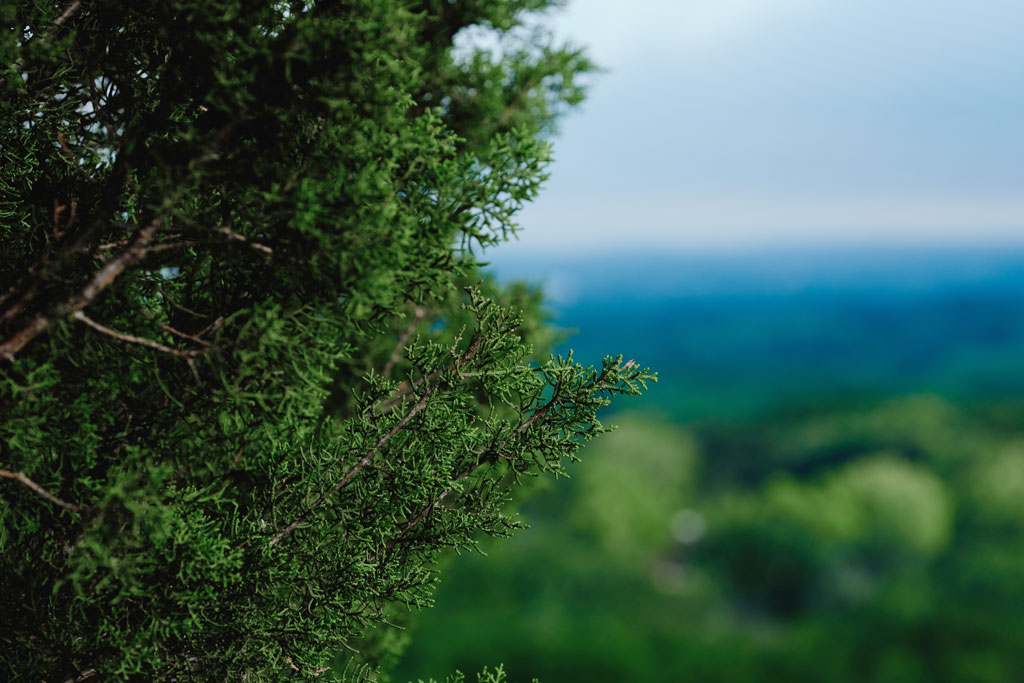Cedar fever sneezin’ at full blast

Ashe juniper trees in the Texas Hill Country. Mid-December through early February is cedar fever season, when the male junipers release tons of pollen into the air, causing an allergic reaction in many people.
Cedar fever season is here. Central Texas was covered with high levels of Ashe juniper pollen on New Year’s Day, and moderate to high levels are expected in the coming days. The pollen typically begins to fill the air in mid-December and persists through early February, triggering an intense allergic reaction for many people commonly called cedar fever.
Monday, Jan. 1, showed the highest pollen levels of the season, hitting an 11.2 on Pollen.com’s Pollen Level Index (PLI) and surpassing the previous high of 10.9 on Christmas Day. The index is on a scale of zero to 12.
Pollen levels fell following Monday’s peak but are expected to shoot up again, according to the current five-day PLI forecast:
- Friday, Jan. 5 — 8.8
- Saturday, Jan. 6 — 10.5
- Sunday, Jan. 7 — 9.1
- Monday, Jan. 8 — 11.4
- Tuesday, Jan. 9 — 11.3
Cedar fever is characterized by fatigue, sore throat, runny nose, partial loss of smell, and, in some cases, an actual fever, according to the Texas A&M Forest Service.
One of the best ways to mitigate symptoms is to remain indoors as much as possible during high pollen levels. If you must spend time outside, the heaviest pollen activity is usually from 5-10 a.m. and can be especially brutal on windy days.
This reporter, an avid sufferer of cedar fever, has found that washing your hair and clothes after spending time outdoors can help keep you pollen free once you make it home.
2 thoughts on “Cedar fever sneezin’ at full blast”
Comments are closed.


When we moved to the Hill Country in 1993 I got Cedar fever so bad that I lost my voice my head was pounding with congestion it turned into sinusitis. I was an independent consultant and trainer at that time and needed to talk to large groups. On my own I decided to eat one Juniperberry a day and drink one jigger of gin, which is flavored with Juniper berries) I did this for 60 days in the cedar fever left & I have never had it again.
After annual cedar fever misery, a couple of daily tablespoons of local wildflower honey eliminated the horror for me, and it’ll beat the heck out of white sugar in your tea and coffee. Avoid big pharma chemicals every chance you get, support your local beekeepers, and get some sweet relief.